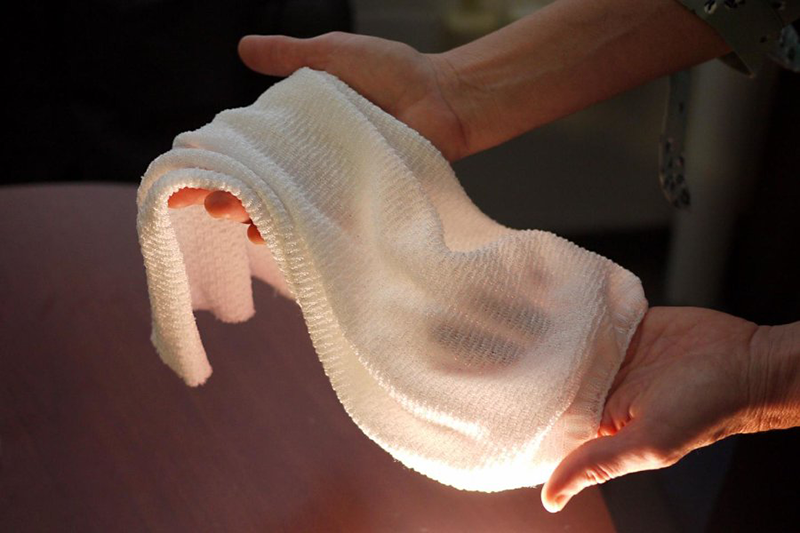
Decades of innovation in the field of fabric development failed to produce a fabric that can automatically change its insulation properties in response to the environment, for example, keeping a marathon runner cool in hot environment or an alpine skier warm in the winter.
Related KJUS Develops World’s First Sweatless Ski Jacket with HYDRO_BOT Technology
Now, for the first time, researchers at the University of Maryland (UMD) have engineered a new fabric from synthetic yarn with a carbon nanotube coating that gets activated by temperature and humidity. The fabric releases heat in warm humid conditions and traps heat when conditions are cool and dry.
The new fabric created by Min Ouyang, a professor of physics, and YuHuang Wang, a professor of chemistry and biochemistry, both at UMD, allows infrared radiation (heat) to pass through when the conditions are warm, and reduces the heat that escapes when the conditions become cooler, reports Science Daily.
The fabric was created from specially engineered yarn coated with a conductive metal.
“This is the first technology that allows us to dynamically gate infrared radiation,” said Prof. Wang.
This new development was reported in the journal Science.

The base yarn is created with fibers made of two different synthetic materials – one absorbs water and the other repels it. The strands are coated with carbon nanotubes, a special type of lightweight, carbon-based, conductive metal. Because materials in the fibers both resist and absorb water, the fibers warp when exposed to humidity such as that surrounding a sweating body. That distortion brings the strands of yarn closer together, which does two things:
- First, it opens the pores in the fabric. This has a small cooling effect because it allows heat to escape.
- Second, and most importantly, it modifies the electromagnetic coupling between the carbon nanotubes in the coating.
“You can think of this coupling effect like the bending of a radio antenna to change the wavelength or frequency it resonates with,” Wang said. “It’s a very simplified way to think of it, but imagine bringing two antennae close together to regulate the kind of electromagnetic wave they pick up. When the fibers are brought closer together, the radiation they interact with changes. In clothing, that means the fabric interacts with the heat radiating from the human body.”
Related Dupont Launches Innovative Smart Garment Made Exclusively for FC Barcelona
More work is needed before the fabric can be commercialized, but according to the researchers, materials used for the base fiber are readily available and the carbon coating can be easily added during standard dyeing process.











